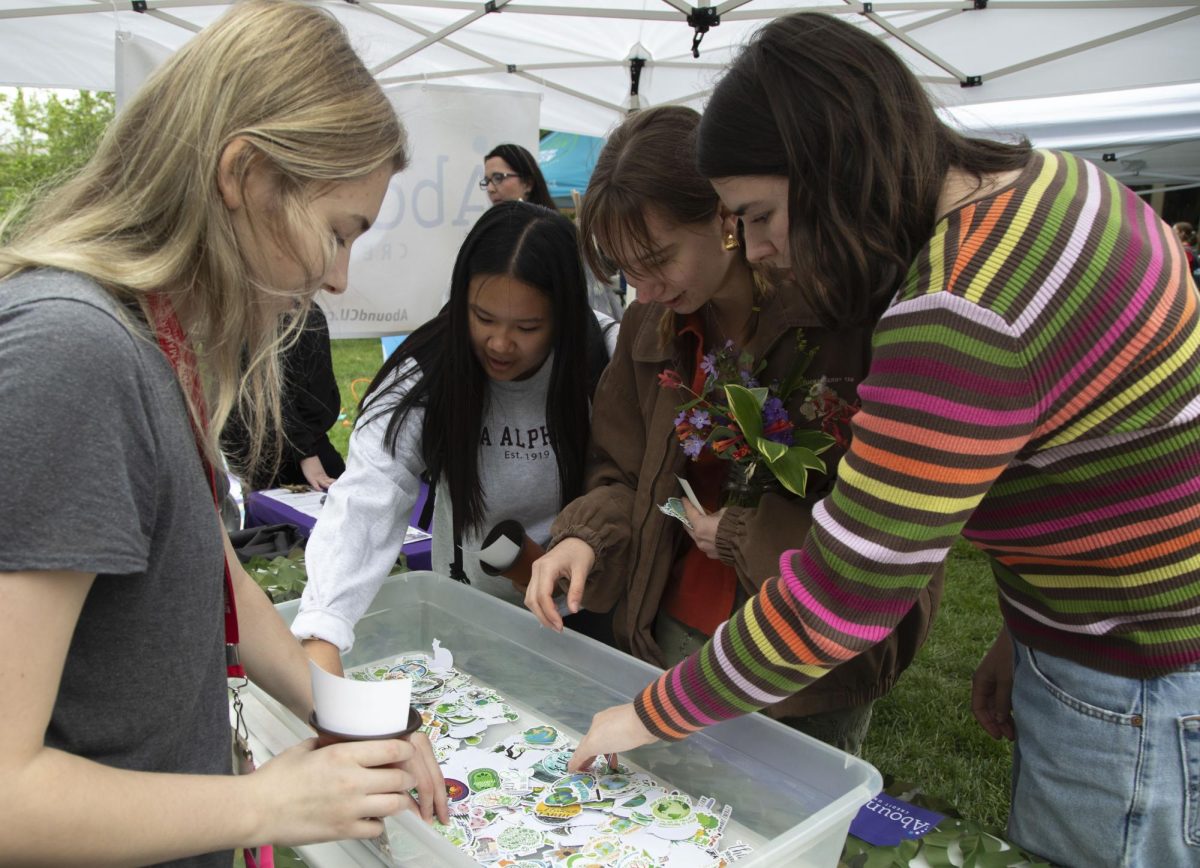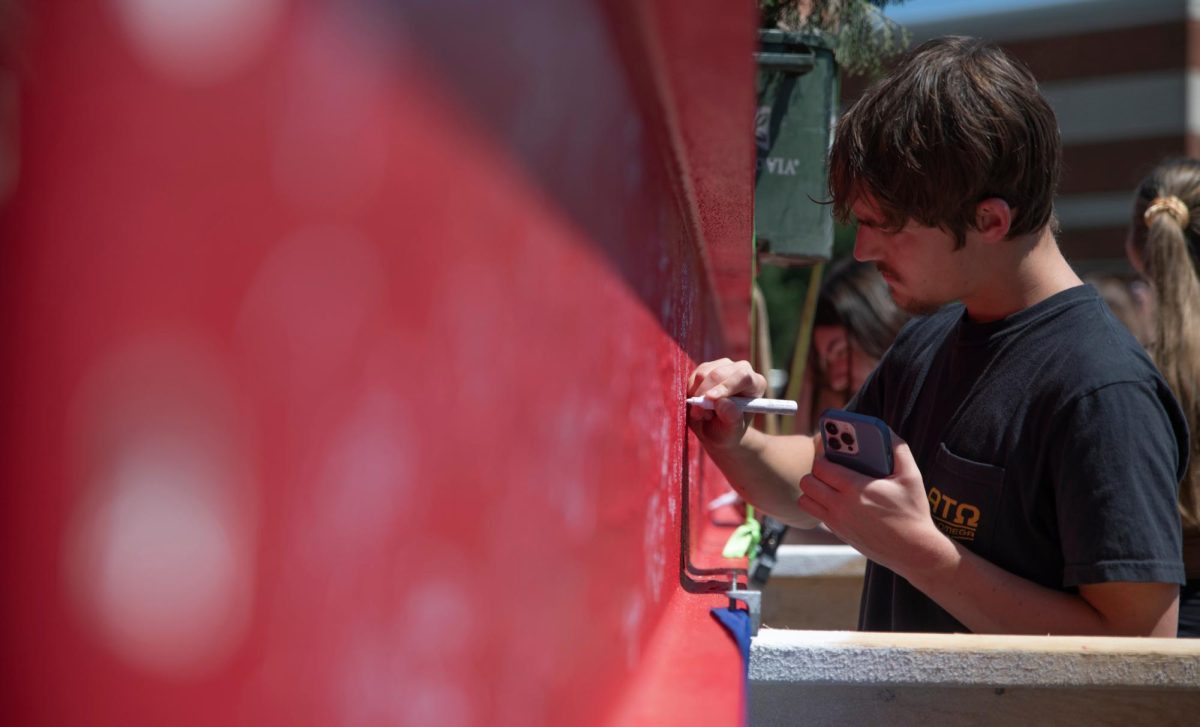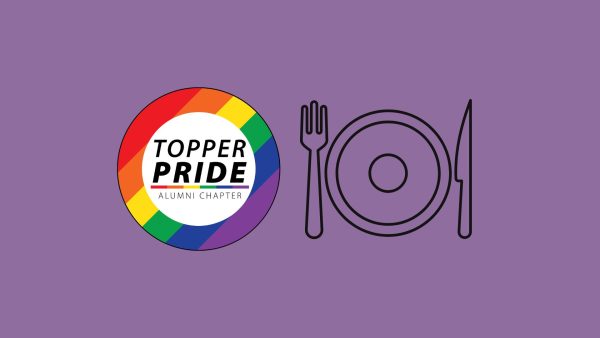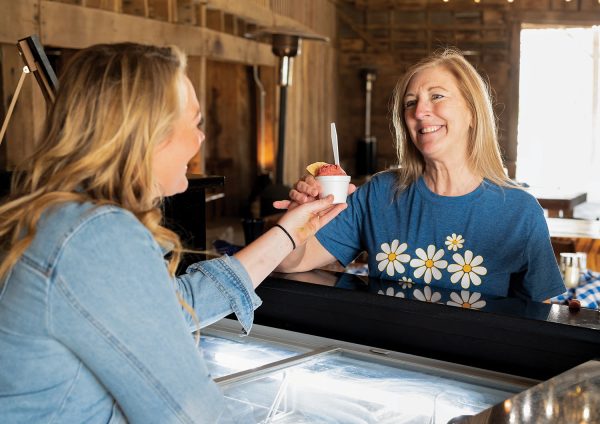WKU students help community through class project
April 26, 2013
One hundred dollars does not go far today unless it is one of The $100 Solution projects, a service learning project where students are required to partner with an organization in the community and ask what they can do to help and implement a solution limited to no more than $100.
The $100 solution is based on five guiding principles with a goal of impacting lasting change in the community.
For WKU biology major Paige Hughart, working with plants is more in her comfort zone than working with children. Yet Hughart decided to challenge herself and work with kids for her group’s $100 Solution project.
“This was totally out of character for me. I would nave normally picked something with farming,” Hughart said.
The $100 Solution projects are implemented by students in groups of five who choose their project based on a common interest. In Hughart’s case, the group’s interest was helping kids so they partnered with the Parker Bennett Community Center.
The group discovered that only three people are available to actually watch the nearly 60 children ages 5 to 12 in the after school program. Many of these kids struggle with reading.
At first, the group wanted to set up a system for more volunteers but realized they did not have enough time to process the paperwork.
Their next solution was to involve the kids in one competitive reading activity each week.
Omar Rogers, supervisor of Parker Bennett Community Center, worked with the students to discover a solution.
“I think what they do is a good thing,” Rogers said.
For Hughart and others in the group, working with kids was a new activity for them.
“A lot of us in the group had never worked with kids before,” Hughart said. “I went to Omar and told him I don’t know how to talk to kids.”
Not only was interacting with kids a new experience for Hughart, but working with a group proved to be challenging at first as well.
“I learned a lot about myself and group members,” Hughart said.
While Hughart learned about working with kids and group members, she also discovered the value of serving others.
“I like it because the learning experience comes full circle,” Jennifer Mize Smith, an assistant professor in the communication department, said.
Like many college students, Hughart’s top priority was getting a good grade at the beginning of the class. As the semester progressed, however, the importance of the class changed from achieving a letter grade to impacting many lives.
“At first I felt so far removed from it, but after meeting the kids, I then realized I was doing something important,” Hughart said.
Smith agrees that the key for gaining students’ interest in the project is through their interactions with the people that they are helping.
“The students interacting with the people they are helping makes a huge difference,” Smith said. “Their eyes are opened to why it is worthwhile.”
In the class, Smith stresses the importance of focusing on making a difference in one person’s life so that it does not become too overwhelming.
“The guiding philosophy is that making a difference for one person has exponential consequences we will never know,” Smith said.



















![Megan Inman of Tennessee cries after embracing Drag performer and transgender advocate Jasmine St. James at the 9th Annual WKU Housing and Residence Life Drag Show at Knicely Conference Center on April 4, 2024. “[The community] was so warm and welcoming when I came out, if it wasn’t for the queens I wouldn’t be here,” Inman said.](https://wkuherald.com/wp-content/uploads/2024/04/smith_von_drag_3-600x419.jpg)





